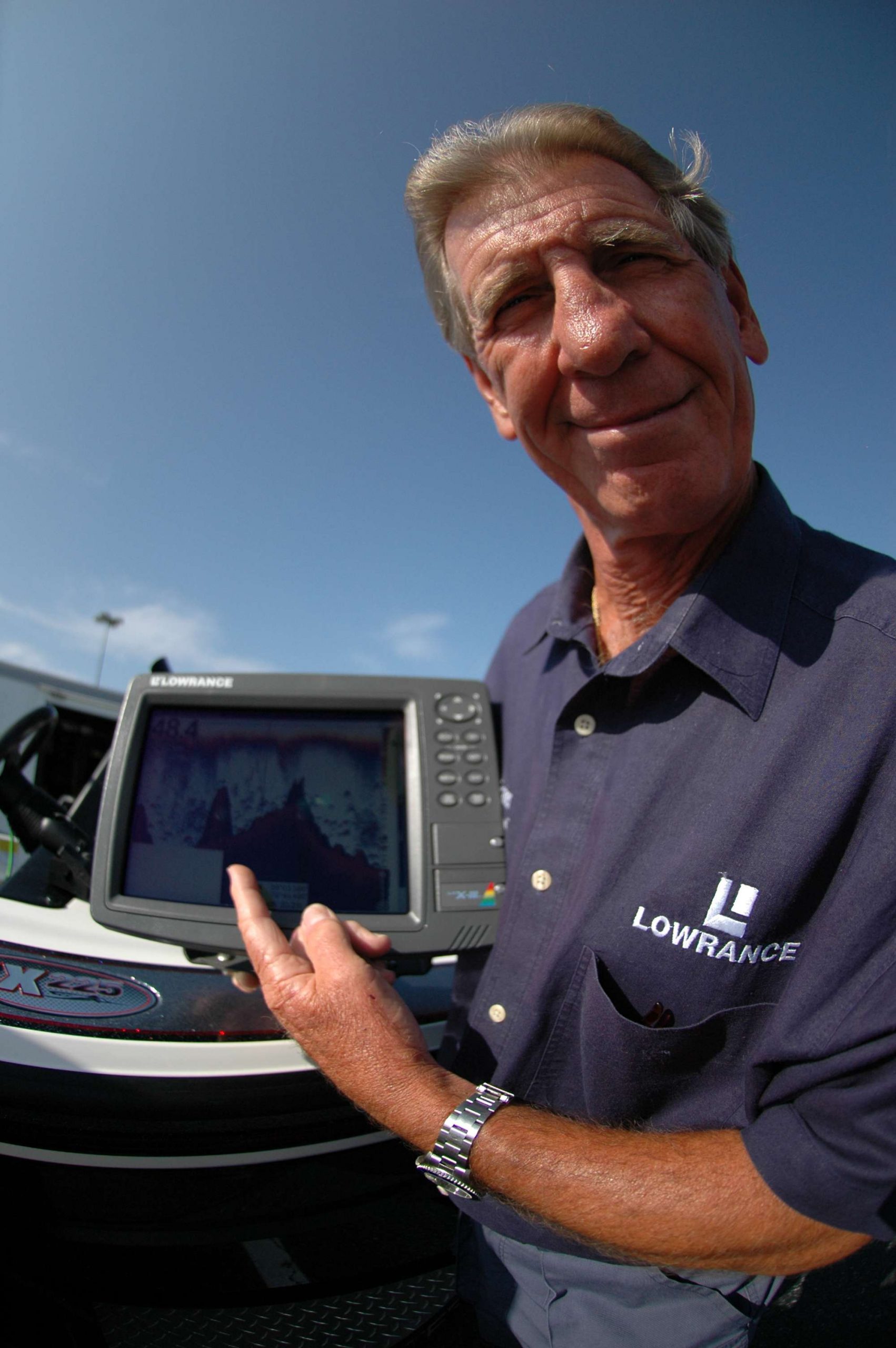
Editor’s note: This is the first of a series by Wilson Frazier covering every aspect of how to use, and get more out of, your electronics. Frazier is one of the leading experts in the industry on the setup and use of electronics. For more information, visit his website.
Part 1: Basic Sonar
We’ll start by defining sonar. It’s an acronym for SOund, NAvigation and Ranging. It is not visual. It’s all about sound. It’ll work as well in the dark as it does in the light. What you see on your electronics screen is nothing more than a visual interpretation of sound information.
Your sonar unit is not a “fish finder,” and it’s not a “depth finder.”
Sonar detects objects in water — suspended, on the bottom, or the bottom itself — by sending and receiving sound waves. It does that on our boats through a crystal in the transducer. The sound waves measure time over distance. That is, how long does it take for a sound wave to leave the transducer, bounce off of something and then return to the transducer as our boat is moving across the water’s surface? That gives us distance.
The only thing that’s “live” (real time) on your sonar screen is on the far right side. Unless you’re running an old paper graph, the screen isn’t moving at all. What’s happening is that lights — your screen is a grid of tiny lights — are being sequentially turned off behind the signal. This creates the illusion of movement. Everything past the right side of the screen is way behind you, so far behind you that you could almost never cast to it.
As you view the screen, and interpret what you’re seeing, keep three things in mind. If the line or object is going up, it’s because that line or object was coming into (toward) the sound waves from your transducer. If the line or object looks flat, the sound waves from the transducer are right over the top of whatever it is that you’re looking at. If the object appears to be going down, it’s because the sound waves from the transducer are moving away from it. (That’s why a fish looks like an arch instead of a straight line.)
If these lines are long, it’s because the sound waves were over the top of them for a long time. If they are short, it’s because the sound waves were over them for a short period of time. Boat speed has a big effect on that. It’s not all about size. Think of it this way: a rock that’s a foot long will look longer if your boat is moving 2 mph than it will look if your boat’s moving 10 mph.
Another thing: approximately 50 percent of the sound waves are concentrated in the power zone (cone) under the transducer. That circle is roughly one-third of the depth of the water you’re in. So, if you’re over 12 feet of water, your most detailed screen information comes from an area about 4 feet across directly below your transducer.
That’s not all you’re seeing, though. Some of the sound waves outside the cone are bouncing back to your transducer. You get some information from them. Think of it like a flashlight beam. You can see things in the middle of the light the best but you can see things on the outer edges, too.
And another thing: a soft bottom or object will look narrow because the sound waves bouncing off it are weak. There’s no strong, reflective surface. A hard bottom or object will look wide because the sound waves bouncing off it are strong. There is a strong, reflective surface. This is easy to understand if you think about dropping a golf ball on carpet and then on tile.
Pro Angler Tip: If you want to get really good at interpreting what you’re seeing with your unit do what Elite Series angler Dennis Tietje did when he decided to take his fishing to the next level — invest in an Aqua-Vu camera.
Mark something with your electronics and then look at it with your camera. It’ll help you make better judgments when you’re actually out fishing.
Next time — before we get any deeper into sonar — we’re going to cover basic GPS.





